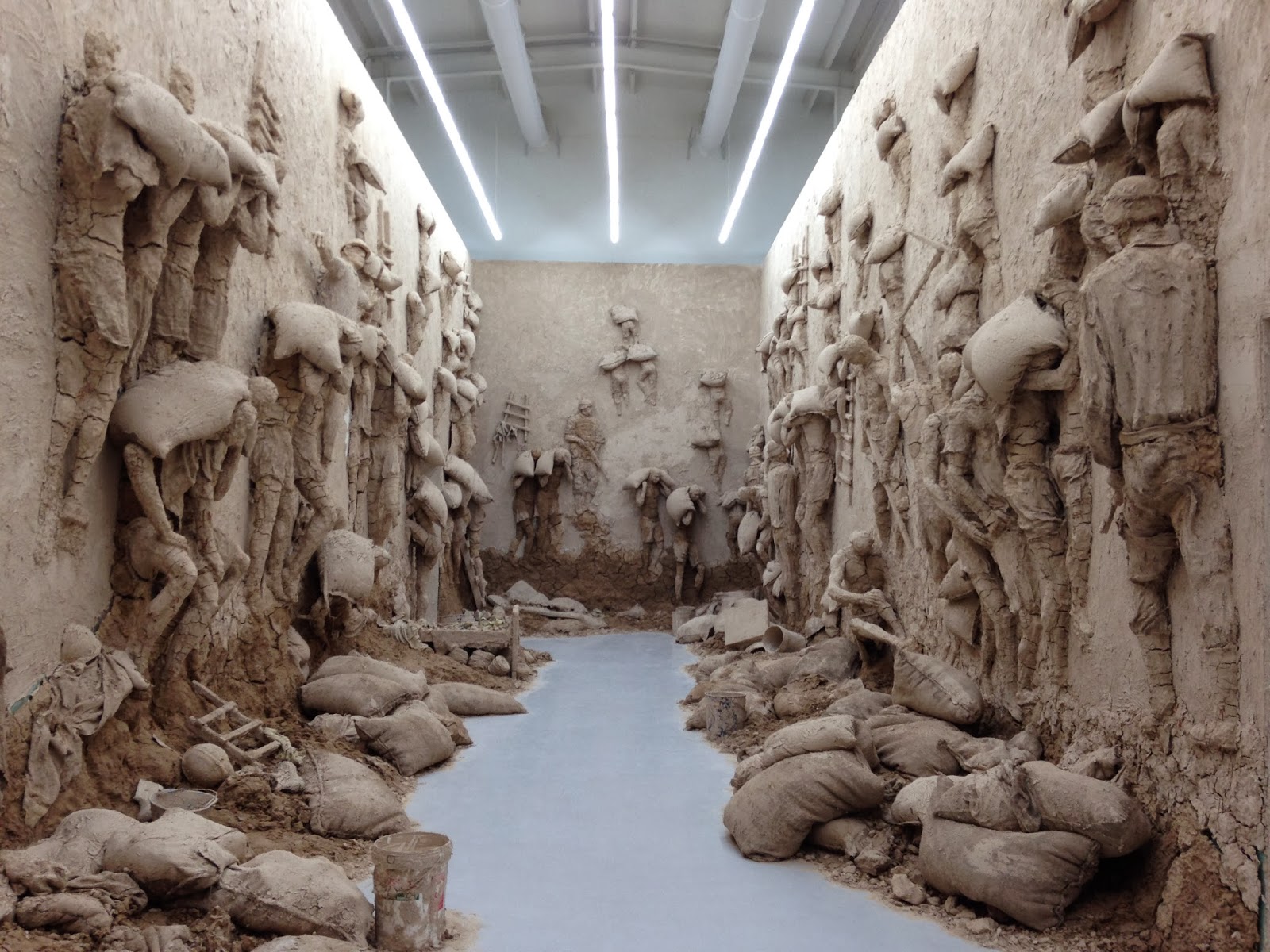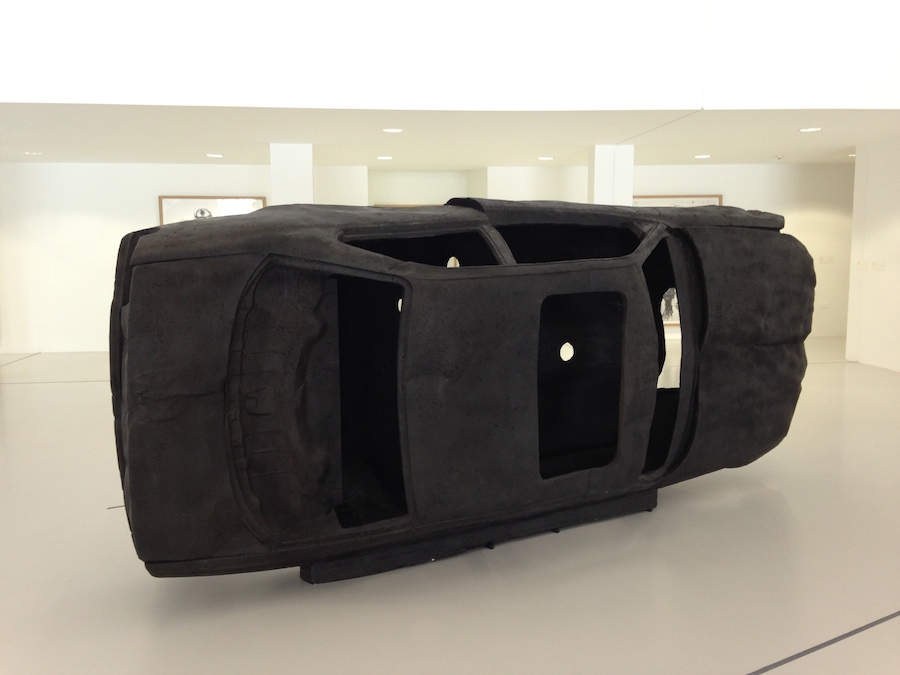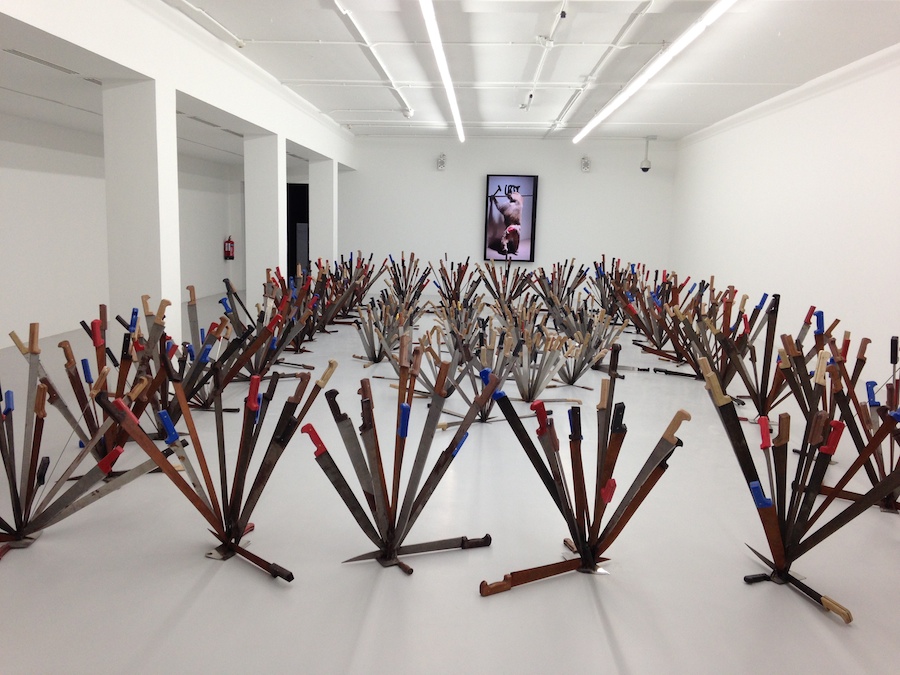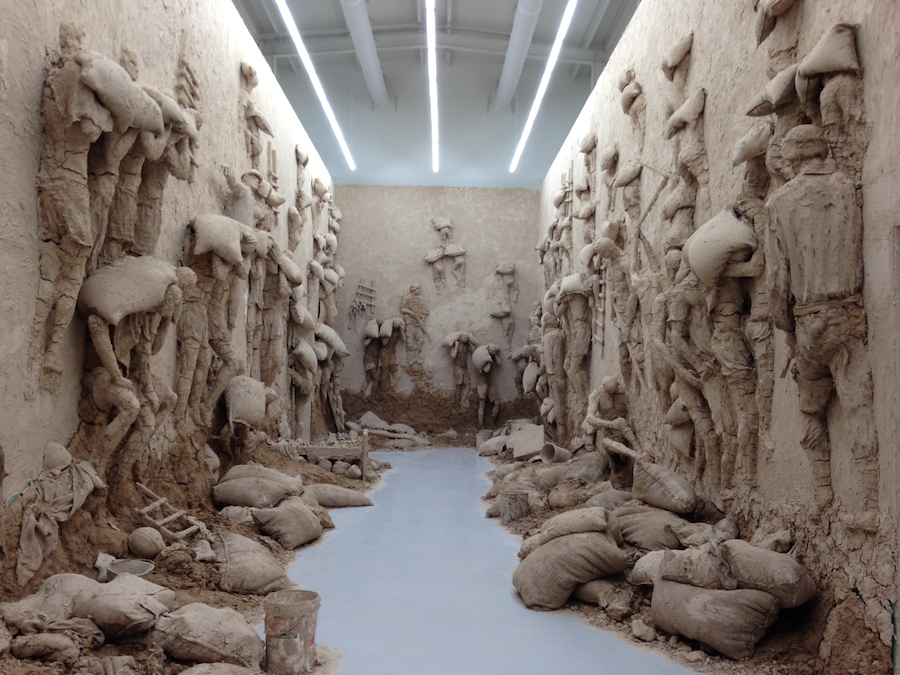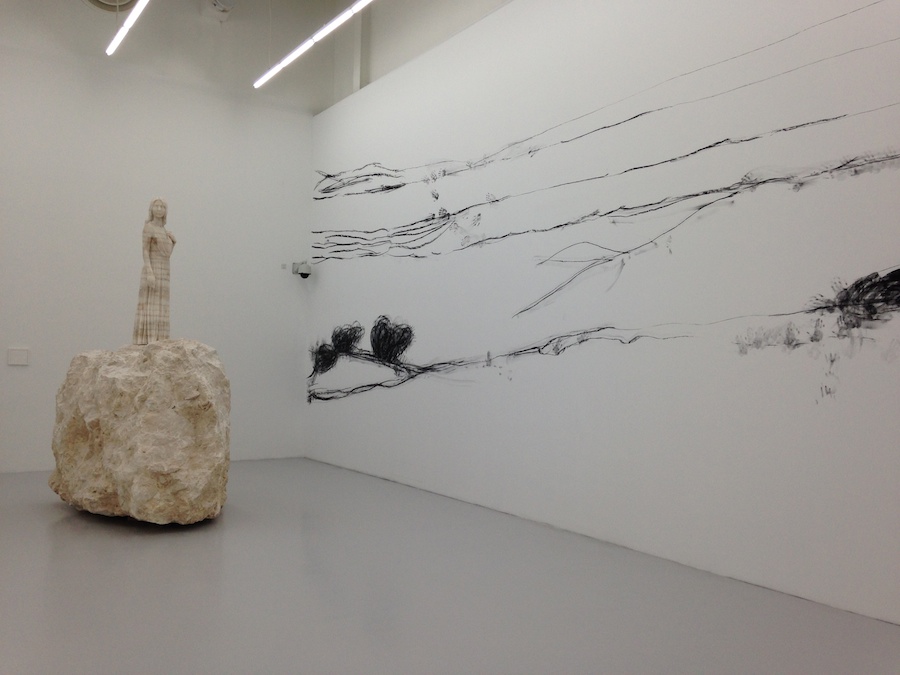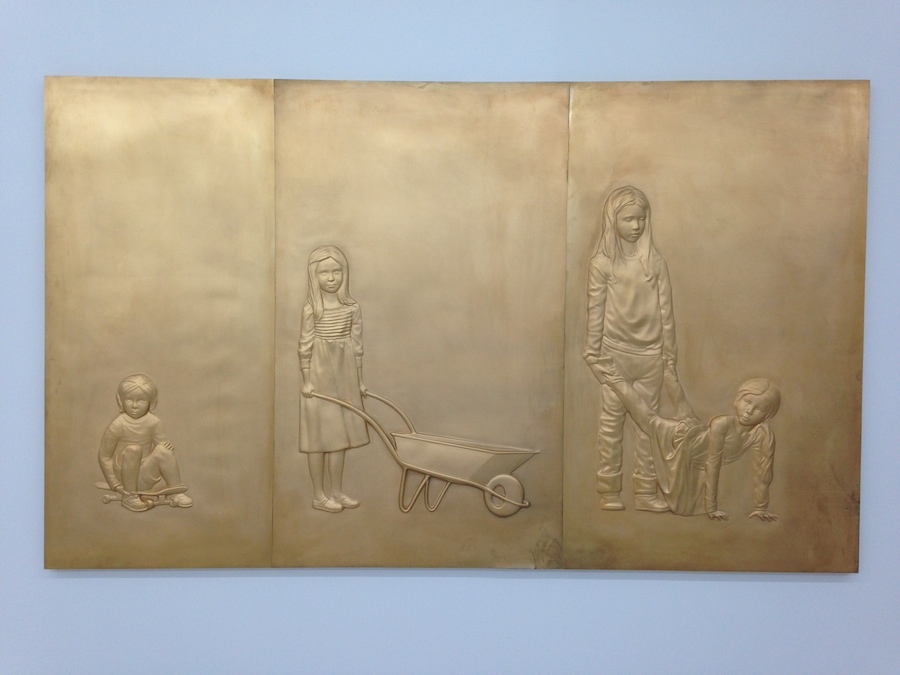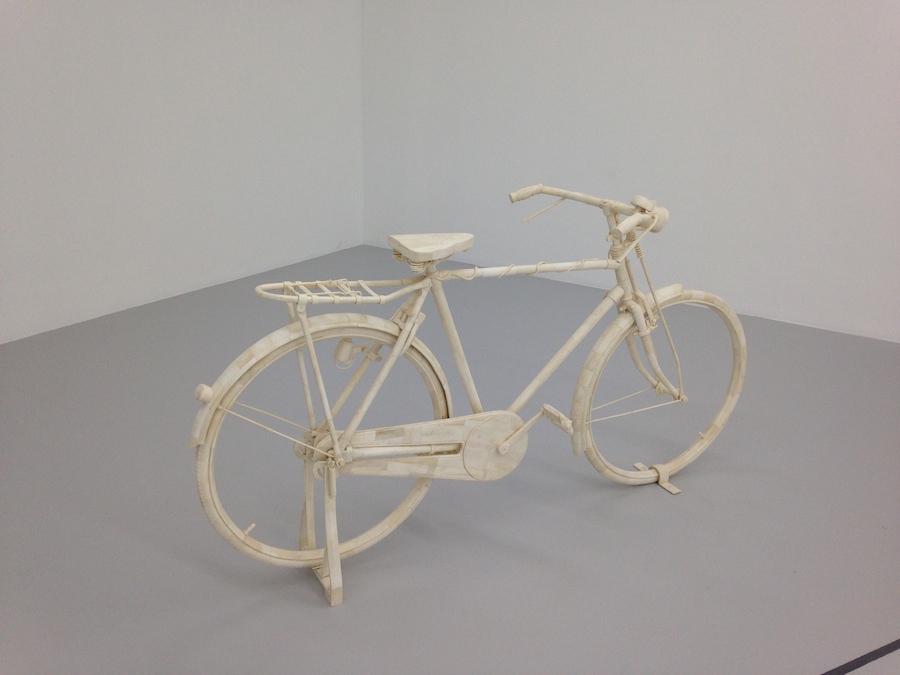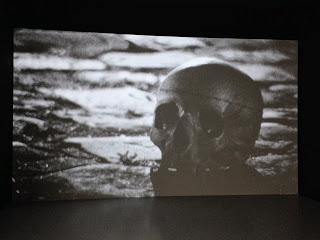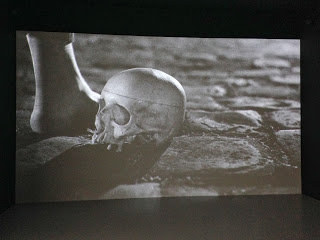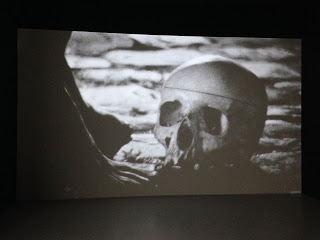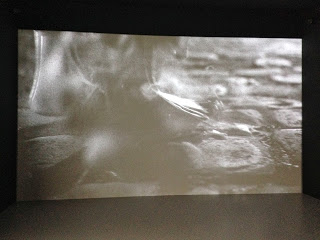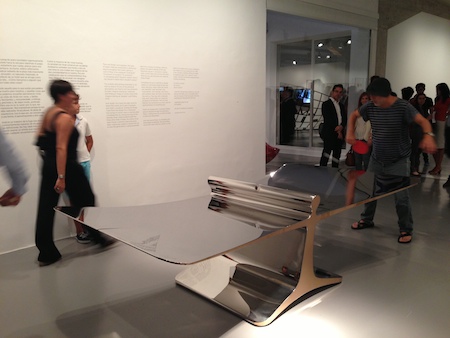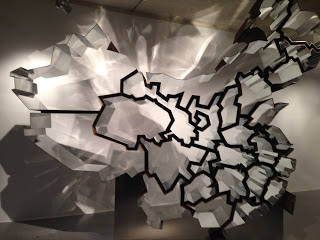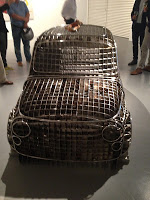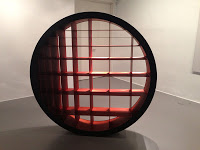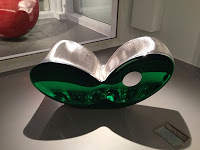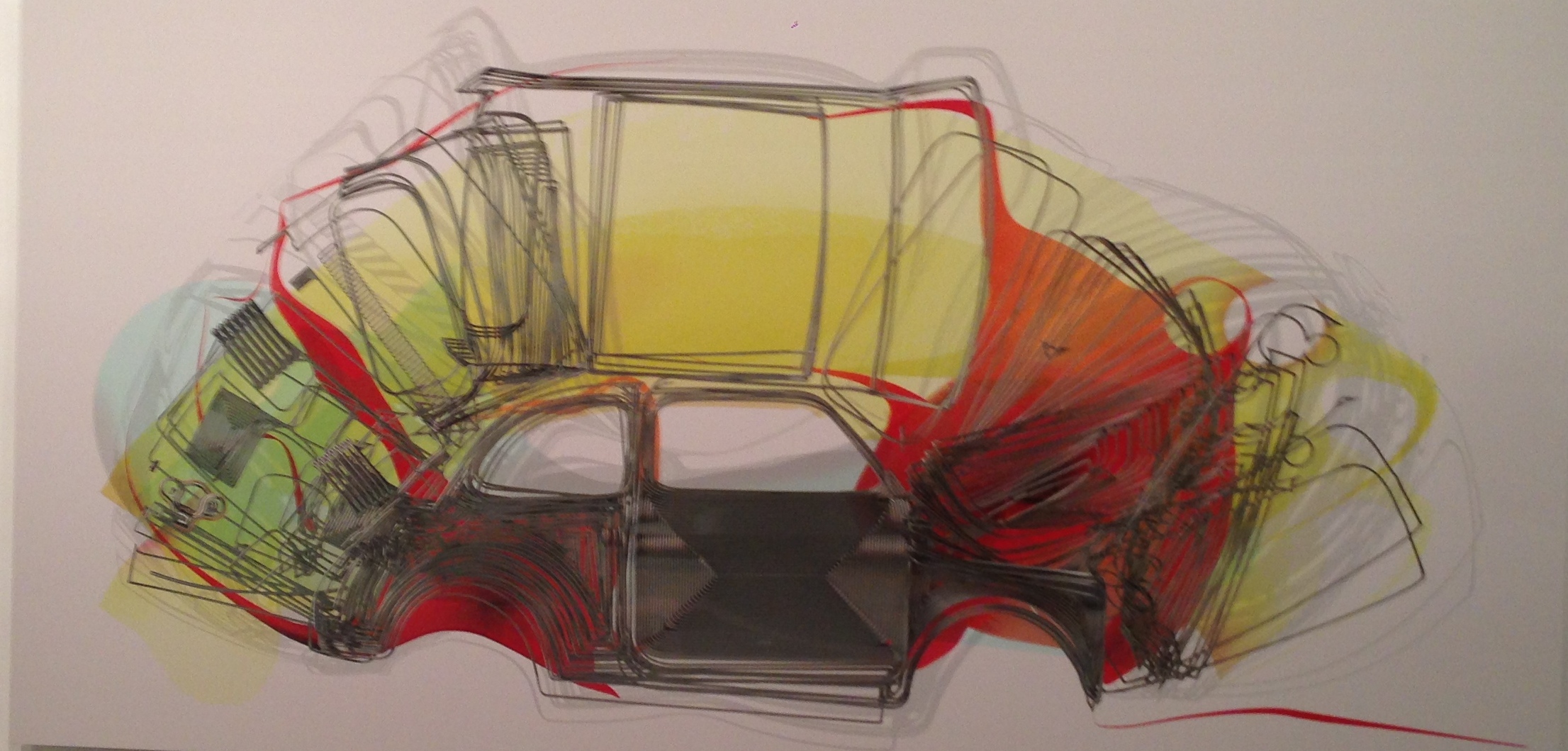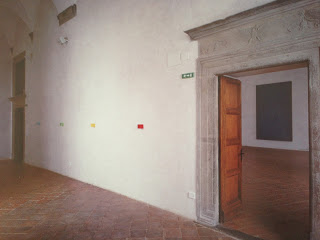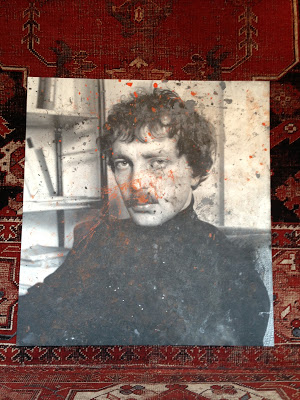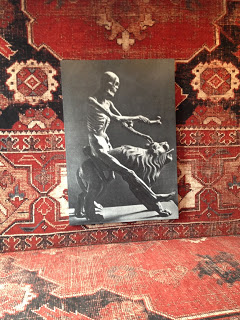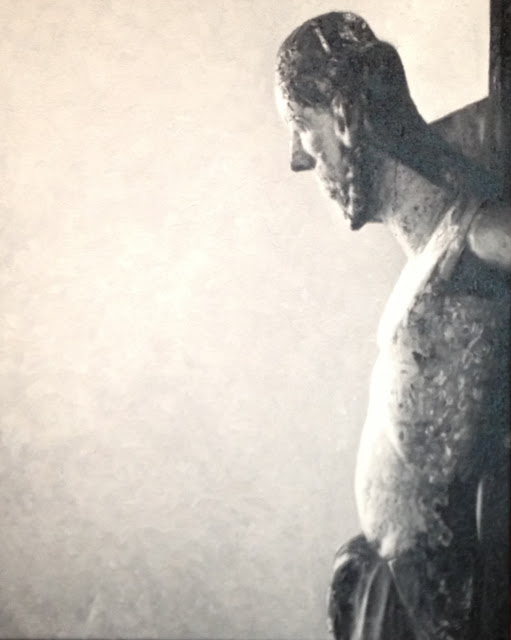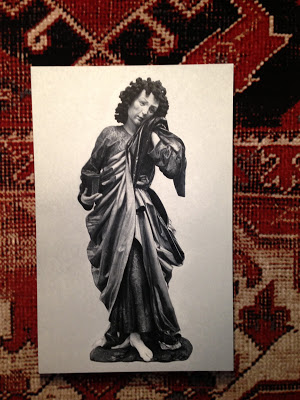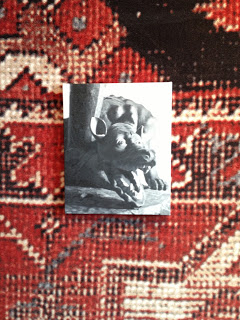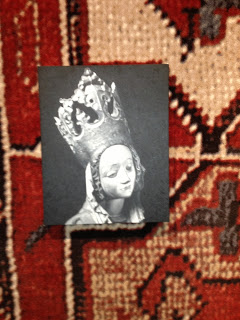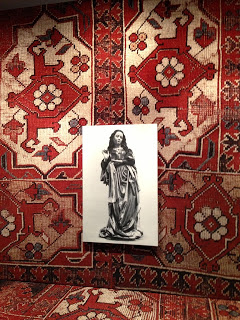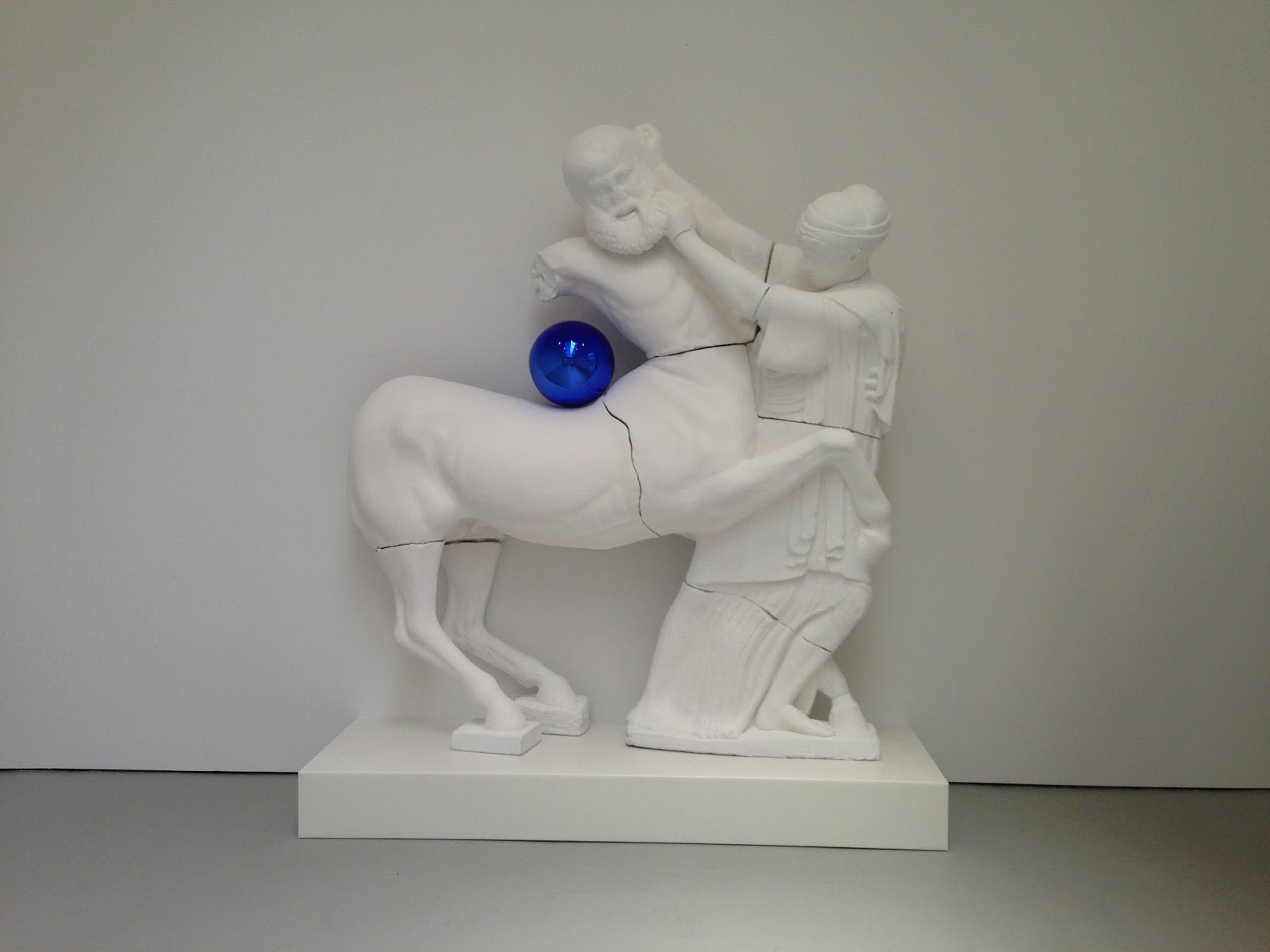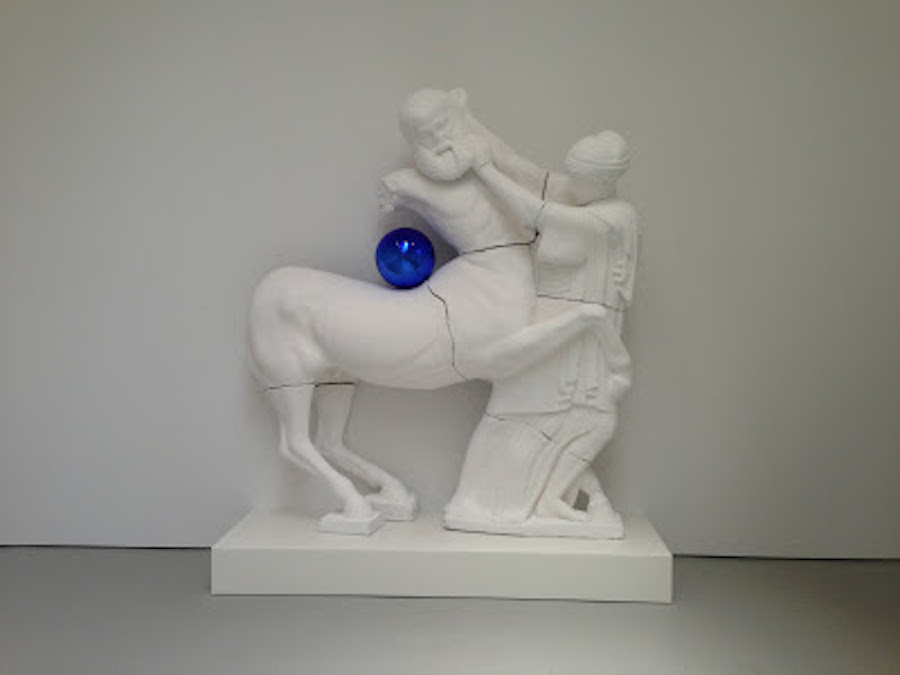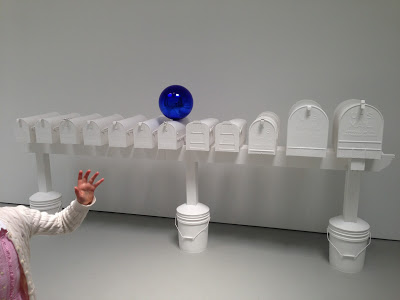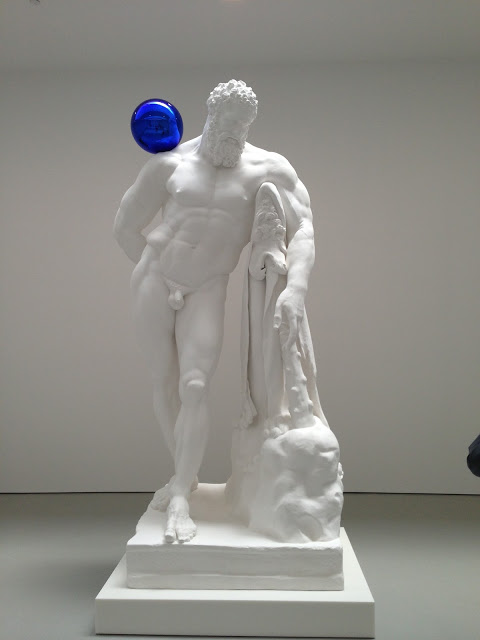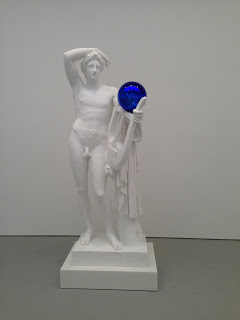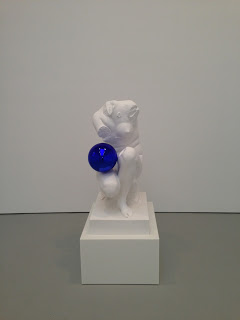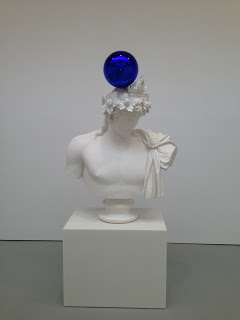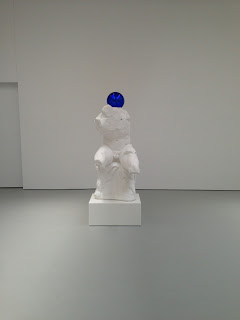- Details
- Written by Alejandra de Argos


This wonderful exhibition of Adel Abdessemed, artist of Argelian origin, can be seen at the Museum of Modern Art in Doha, Qatar, until January 5, 2014. The exhibition opens our eyes to the violence that is present in the world. Adel’s work focuses on art as as a tool to condemn violence, and through his work he describes himself as an artist of action. This is Mathaf’s most significant project to date.
At the entrance to the museum we see La Vase Abominable, a vessel of uncommon proportions resting on a base made of bombs. A vessel and weapons: two of the first artifacts created by Man are united as symbols of our contradictory human condition, creation and destruction.
In the entrance we can also see a video projection called Ayaï, where the action of a bare foot stamping violently on a rose in a cobblestone is repeated endlessly. A curious visual effect is created by the complete destruction of something that evokes beauty.
Under the video we have the Soldaten. Abdessemed sees them everywhere, from Northern Ireland at the start of the 90s to modern-day Afghanistan. For security reasons. For our own safety. Soldiers represent the continuous wars of our time.
Lastly in this room is Practice Zero Tolerance (2006), a terracotta car that seems to be carbonized, in stark contrast against the white walls. An image that reminds me of the many scenes of terrorist attacks in the media.

The next room certainly doesn’t leave one indifferent. East of Eden is the first memory of a field of flowers transformed into knives.
“What a strange metamorphosis is imposing itself into our memory. What a vast and repeated crime has been committed against us, against our bodies, against the soil that we tread on, transforming old dreams of goodwill and happiness into waste, leading to soil destroyed by evil, violence and its signs, for a moment together again in a figure similar to the archetypal garden”.
On the far side of the room, a video (Mémoire) is being projected of a baboon placing letters on a wall, spelling out "Hutu" and "Tutsi" - the two ethnicities which in 1994 caused the Rwandan genocide. Memory, memory everywhere...
Suddenly I walked into a room and the impact was shocking. I found myself surrounded by a human installation tile covering the huge walls. I assume that the artist had to be performed exclusively for the exhibition. Room of a man as a builder. Shams is the name of this huge and very powerful installation. Man as a builder of monuments to perpetuate the memory. The archetype of the artist as a great builder. I found this installation as a kind of tribute to the millions of men who have helped build our memory and which are invisible.memoria y que son invisibles.
 |
 |
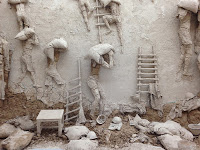 |
 |
Little Pot is a series of everyday jugs made of different materials (clay, rubber, lacquer, jade...). "Gift of love", the promise of time yet to come, perhaps.
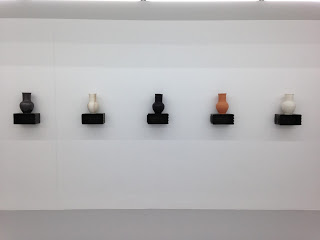 |
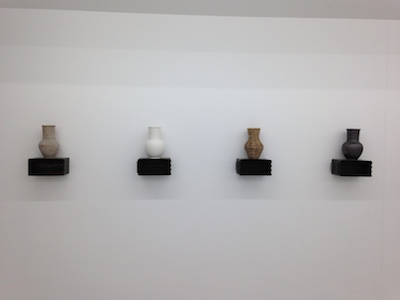 |
Room of the eternal, or Beyond time. Julie. D'un horizon á un autre. This refers to the concepts of eternity and the infinite, two terms which have much to do with the figure of the artist, since his work is related to space and time. The artwork represents his wife made out of salt stone on a rock from Qatar.
“In art, eternity and the infinite are related to the notion of beauty, since in life, beauty is similar to happiness”.
And finally, a golden panel with its four daughters as a dreamt memory of a time that is to come, L'Âge d'Or.
“L’Âge d’Or is a heavenly state where the fatigue of a life of effort and its subsequent unhappiness are banished. The Golden Age appears before civilization and its malaise. It belongs to the realms of myth and mythology…” Pier Luigi Tazzi
|
|
|
|
|
|
Recommendations:
Even in the event of not being able to visit the exhibition, I recommend buying its catalogue. The majority of the information in this post comes from there. As well as explaining Adel Abdessemed’s work and thoughts in a very profound and precise fashion, it is also quite simply a delight for the soul. Art and philosophy are once again united with the purpose of attempting to comprehend our own existence.
- Details
- Written by Alejandra de Argos
Yesterday saw the opening of a new exhibition at Madrid’s Ivorypress gallery of designer and architect Ron Arad’s work. Elena Foster is the gallery’s founder and current director, fulfilling her role admirably. The gallery’s New York garage-style space is appropriate for the scale and scope of Arad’s surprising world.
The first item you see as you enter is a ping-pong table in stainless steel and bronze: the structure and design of its lines is a work of beauty in its own right. Already from this first item, the artist’s incredible technical skill is apparent.
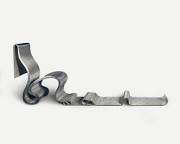
The exhibition invites us to appreciate the breadth of the artist’s work, which spills out into architecture, furniture design, lighting and sculpture. His collection of designer chairs is fascinating, from his very first chair, the Rover Chair, result of two ready-mades, a Rover 200 seat on top of a Kee-Klamp frame; spectacular chairs such as the Narrow Pappardelle and all its poetry; the Blo-Void, which unapologetically abandons all functionality to become a statue; or the singular Gomli, named, according to the artist, after his friend and fellow artist Antony Gormley designed with comfort in mind while eschewing all preconceived ideas of beauty.
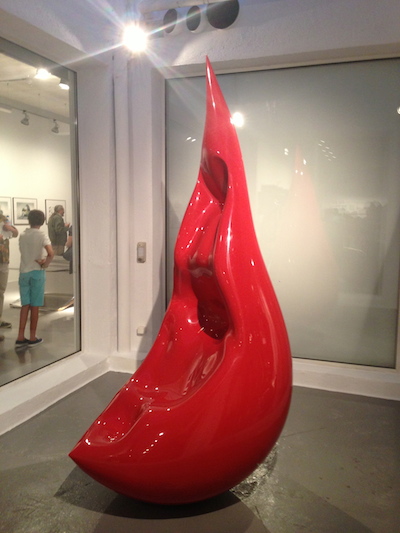
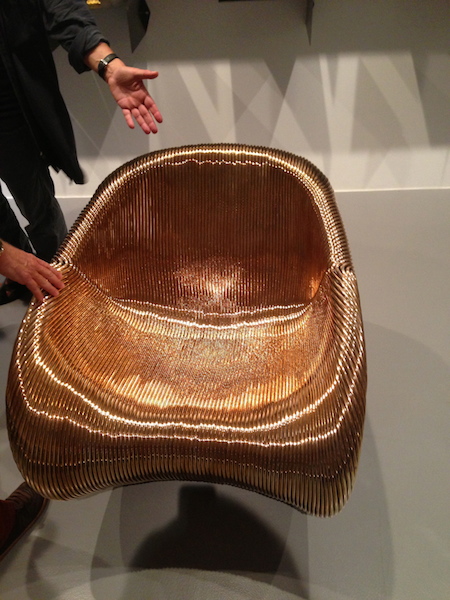
Arad is a versatile, highly creative artist, and skilled in the use of his materials which, through movement, are ascribed a life of their own. He likes to experiment with steel, aluminium, polyethylene or corian, playing around with them liberally to achieve often unexpected and delightful results. His shelf units are just as surprising. The stainless steel map of China is exceptional, and carries great visual impact upon first viewing. No Bad Colours, a workstation containing innovative technology that allows it to change colour, is incredibly creative and breaks new ground in design. But the real star of the show was Restless: movement, harmony and design all coming together in one great art piece.
Blame the tools, a replica of a Fiat 500, architecture projects, eyewear design… all form part of the artist’s fascinating world.
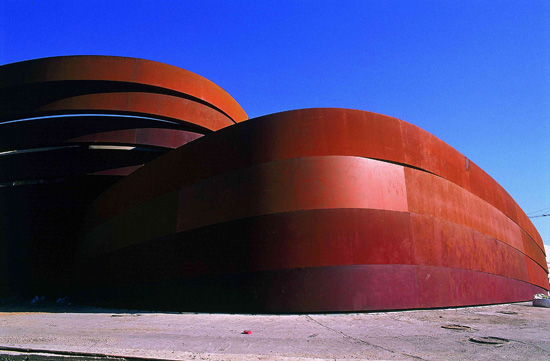
In terms of his architectural work, I would pick out the brilliant Design Museum Holon near Tel Aviv, the artist’s hometown. This is an impressive spiral-shaped construction in Corten steel which surrounds the museum, almost like a huge metal sculpture. A great example of how architecture, sculpture and design can come together harmoniously in a common public space.
The exhibition embraces and embodies Arad’s motto: “My only principle: don’t base anything you do on what already exists”. This and much more can be enjoyed at Ivorypress, thanks in no small part to Elena Foster’s continued efforts to introduce us to the great artists and thinkers in design, architecture or painting.
- Details
- Written by Alejandra de Argos
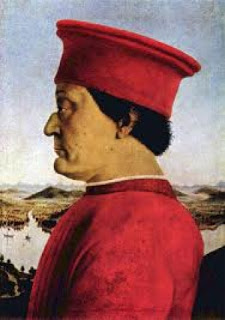
In 1999 I visited the magnificent Ducal Palace in Gubbio, owned by Federico de Montefeltro, Duke of Urbino and one of the 15th century’s great wonders. It was there, in the palace’s cold, empty halls, that part of the Panza di Biumo collection is held, containing works from the 1980s and 90s.
Monochromatic paintings in various formats filled the walls of the palace, and each of the participating artists was given a specific space in which to display their talents. The collection included Ettori Spalletti’s simplicity and harmony, metallic monochromatic paintings by David Simpson, geometric paintings by Ford Beckman and even small cubes by Stuart Arends, whose tiny size caught my attention - appearing in different colours on a large wall, it seemed as though they would simply vanish in space.
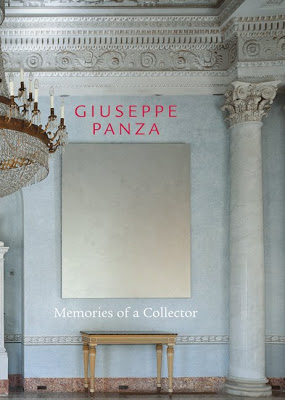
In his book Memories of a Collector, Panza reflects on Arends’ imaginative and sensitive artwork, noting that rather than hiding a certain ideology behind its surface, its sole purpose is aesthetic: beauty, composition and colour. There are times when visitors are grateful for the simple aesthetic contemplation of a piece, without feeling as if they are missing out on a greater message that the artist is trying to communicate.
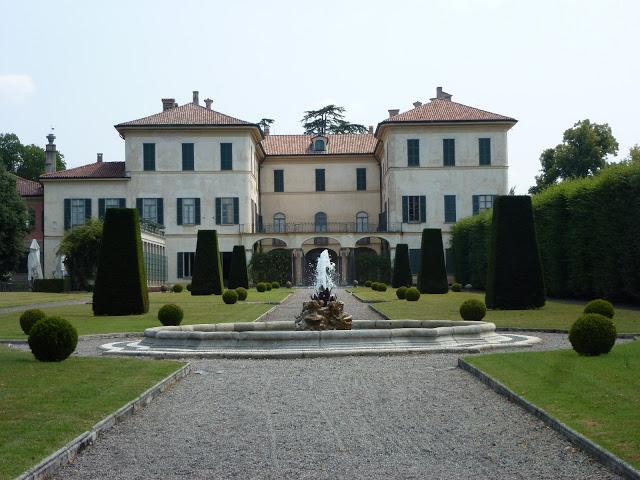
In September 2012 I had the chance to visit Villa Menafoglio in Varese (near Milan), a splendid building and home to Giuseppe Panza, one of history’s great contemporary art collectors, who lived there until his death. His widow Giovanna, who shared his passion for art, still lives in the Villa today. Panza’s interests were broad, including philosophy, astronomy and biology, the first in particular informing much of his art collection. He was a passionate man who tirelessly pursued his search for truth in life and art.
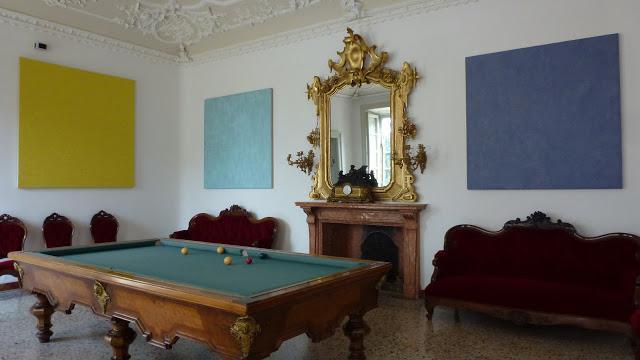
He bought his first painting, a Tàpies, in 1956, attracted as he was by its pessimism which he recognized as being the result of the social traumas and political upheaval after WWII, and which deeply affected him personally. He was collecting art from the United States, spurred on by the lower prices and a more energetic, exciting art scene, at a time when Europe was not paying much attention to the American art market. Towards the end of the 50s, he starts buying Rothko’s spirituality, the every-day of Rauschenberg as a conceptual form of expression, the endlessness of Kline… In the 60s, he moves towards ever more abstract art, minimalist and conceptual works that are stripped to their essence, adding artists such as Donald Judd, Dan Flavin, Richard Serra, Bruce Nauman and Robert Morris to his collection. In this period he also shows an active interest in the emerging pop art movement, acquiring works by Lichtenstein, Oldenburg and Rosenquist, among others. His collection continues to grow steadily, eventually adding up to over 2,500 pieces: a staggering representation of every avant-garde movement that came out of the second half of the 20th century.
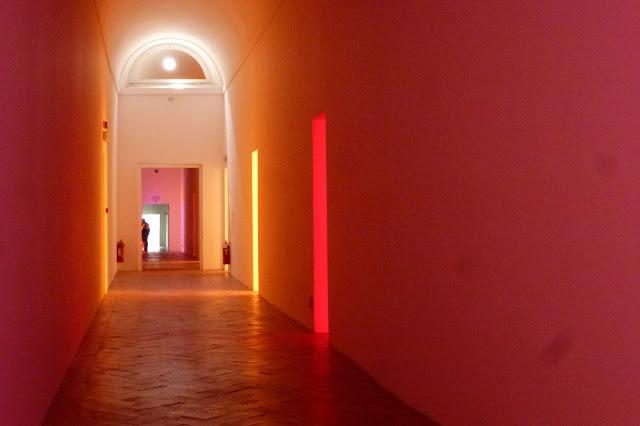
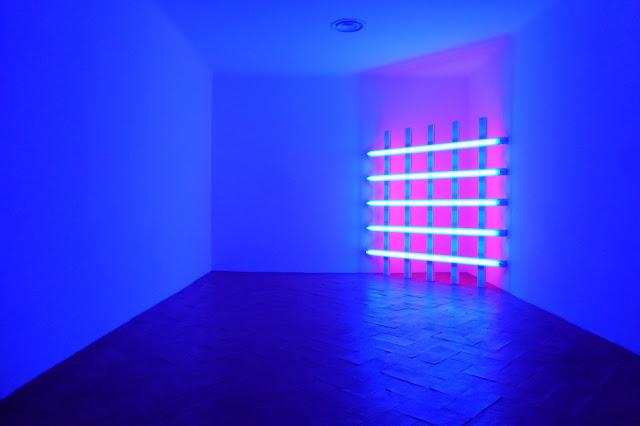
Today Villa Menafoglio maintains a permanent collection, even though the majority of the original collection was acquired by Los Angeles’ Museum of Contemporary Art and the Guggenheim in New York. What I found most fascinating was a part of the villa dedicated to Dan Flavin, made up of various halls each containing an installation piece by the artist: I’d certainly never seen a larger permanent space dedicated to Flavin before. The space was filled with complete silence, and visitors would walk down corridors lit by lights in adjacent rooms. The halls were set up to induce visitors into an almost mystical state of deep contemplation and reflection. Another artist whose work caught my attention was James Turrell: his work, which changes the environment around it, plays with space, light and our perceptions in general, sometimes tricking our senses in a surprising way. Other artists of note here are David Simpson, Max Cole, Fredenthal, Charlton and Beckman, as well as an excellent collection of African and Pre-Columbian art.
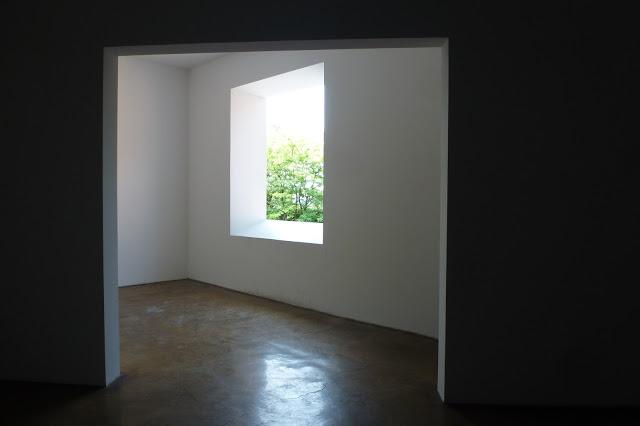
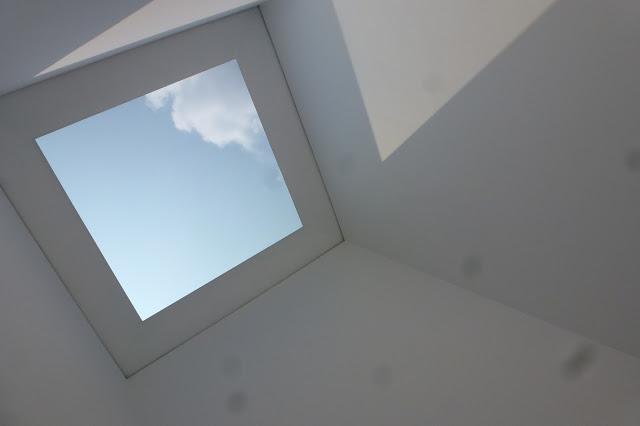
A visit to the museum is highly recommended - through its collection, Panza has tried to understand the society of his time and the profound changes it was going through. This close relationship between art and the passing of time, together with the idea of art as a channel for humanity’s deepest concerns, were the common threads in his life and collection.
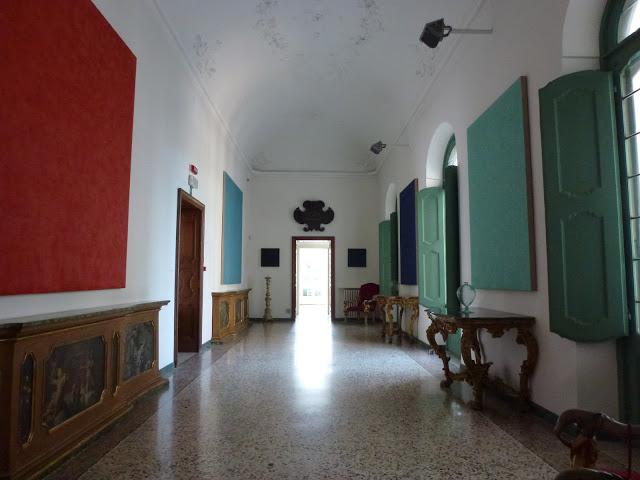
Fotos Camilayelarte
- Details
- Written by Alejandra de Argos
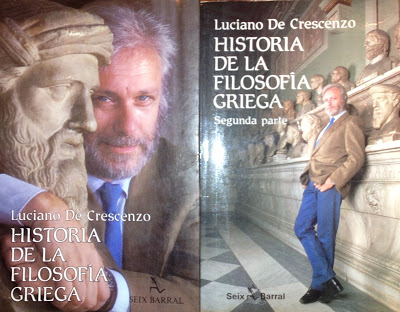
Greek civilization laid the foundations of our contemporary Western culture - it is in Ancient Greece, specifically in Miletus, where the origins of philosophy are to be found.
The book begins with the Seven Sages of Greece and with Thales of Miletus, the first man to attempt to explain natural phenomena through science rather than myth.
Among other things, he earned his fame for having predicted a solar eclipse, discovering Ursa Major and its importance in circumnavigation, and for his theory on the existence of a primordial entity from which all things originate. Until Thales’ findings, all phenomena that could not be readily understood by man were attributed to the Greek gods who, although they exhibited physical attributes far superior to mortals, were nevertheless imagined in the shape of man with their same mortal needs.
For most readers, philosophy is a very dense discipline, and that is true for some parts of it. Hence this book’s appeal: written in an engaging and accessible style, it takes the reader on an exciting journey through the history of thought.
Philosophy, meaning “love of knowledge”, began in Ancient Greece and it is the attempt to find rational answers to the fundamental questions in life. Studying the history of philosophy is important not only for the factual knowledge we learn in the process, but also because it teaches us about the need to develop independent thought.
Philosophy is our guide in the difficult task of daring to think for ourselves. Kant - and many others before him - reminds us of this with his well-known “Sapere aude”, or “Dare to know”. We are so conditioned in our thinking that we don’t even realize it’s happening. Our family, teachers, our spiritual guides, the State, mass media, our consumerist society, etc.: everything and everyone around us, in some way, directs us towards a certain way of thinking and living. This is actually very easy for us to submit to, since we spend a lot less effort delegating our thinking to those we consider better able at doing it for us. According to Immanuel Kant in his 1784 essay, “Answering the Question: What is Enlightenment?”, we act like this either out of laziness - it’s easier for us to have others think on our behalf - or out of cowardice - for fear of being wrong. In either case, he thinks it’s down to immaturity.
The idea of “daring to know” is as timeless as the history of thought; the great contributions made to the evolution of thought by these philosophers can be applied to any time in the history of humanity. And this is precisely why philosophy is a highly relevant subject in all our lives. This book is just the first step.
- Details
- Written by Alejandra de Argos
One of this year’s Venice Biennale’s most remarkable exhibitions was undoubtedly Italian artist Rudolf Stingel, held in the Palazzo Grassi.
His first exhibition in the United States, which I still remember vividly, took place at the Museum of Contemporary Art in Chicago in 2007. The artist had covered the walls of a room with Styrofoam coated in aluminium, and visitors were invited to physically interact with the installation by scratching parts of the aluminium coating off the wall, thereby leaving their marks on the piece with writings, drawings or scribbles. I’ve tried and failed to remember what mark I left on the wall: probably nothing of note.
Stingel’s work is characterized by an interest in having the viewer actively participate in the creative process. On this occasion, Stingel’s large exhibition takes place in the 18th century Palazzo Grassi, where the artist has created a fascinating installation in which the palace’s floors and walls have been entirely covered by an enormous carpet (a reference to Freud). Also on display are his monochromatic paintings and paintings of Gothic and Baroque saints, which when juxtaposed with the reference to psychoanalysis helps to create a bizarre and unexpected viewing experience. The paintings and their connotations, with their idea of looking back at a past moment in time, may be implying an analogy with Freudian therapy. I was particularly struck by a side-view image of Christ’s crucifixion: the angle chosen by the artist to represent this iconic image is uncommon and one that I had not seen before. I found it a very disturbing piece.
Combining the full-space carpet installation with the paintings on the walls leads to a feeling of unease. It’s disorienting to be looking at the paintings on a carpet background which should really belong to the floor one is standing on, and one’s perception of the painting is certainly affected. Viewers tend to feel somewhat confused.
Stingel is interested in the viewer’s perception of art, something clearly seen in this exhibition. Conceptual art, installations and hyperrealism are the tools he uses in his mission to explore the creative process. A provocative, compelling artist whose prolific and heterogeneous output is well worth taking the time to study in depth.
- Details
- Written by Alejandra de Argos
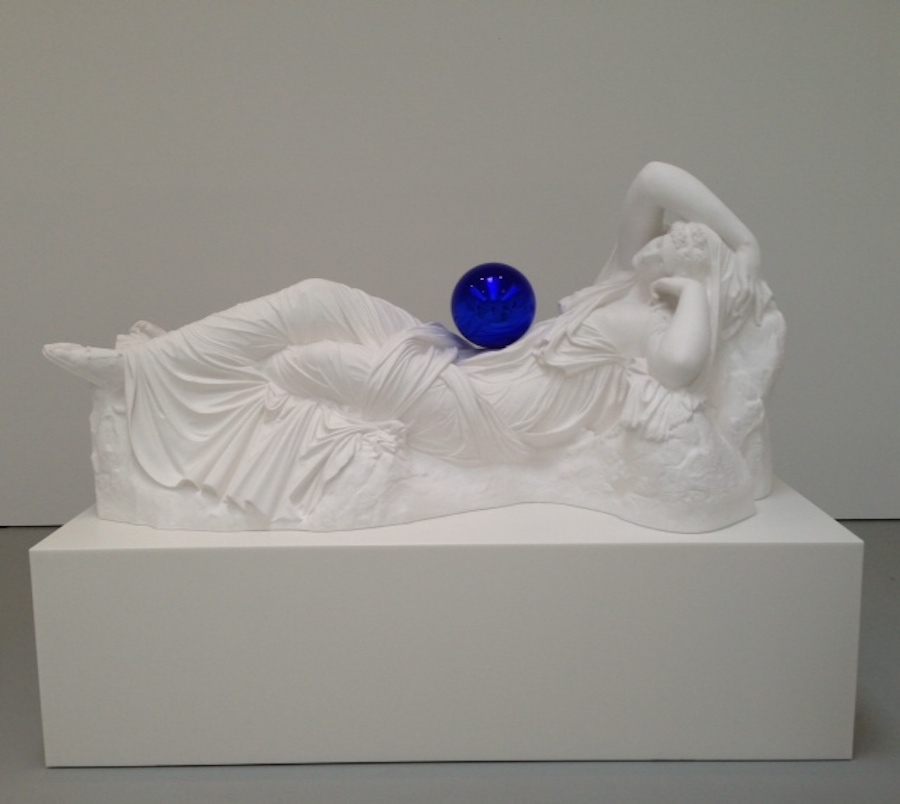
That’s one way of describing Jeff Koons’ latest work, currently on show at the brilliant David Zwirner gallery in Chelsea, New York City.
As I walked into the white-walled gallery, I was overwhelmed by the unexpected sight: numerous life-sized Greco-Roman sculptures surrounded me in a lively, curious dance. Hercules, Aphrodite, Narcissus, Dionysius… they were all there, torn from their world of antiquity and relocated to modernity, where the concept of time simply fades away. All the sculptures are made out of pure white plaster, and each of them is holding a perfect sphere made of electric blue glass, giving each sculpture an incredible sense of balance. The stark chromatic contrast between the blue and the white, as well as the impact from the sheer size of the figures, lends the works a very contemporary look and feel.
The idea of the glass balls, which are painted from the inside, comes from the artist’s childhood in York, Pennsylvania, where middle-class families would place them in their gardens. They would gradually become status symbols: the balls’ glassy, mirror-like surface entrancing their owners with their all-seeing power.
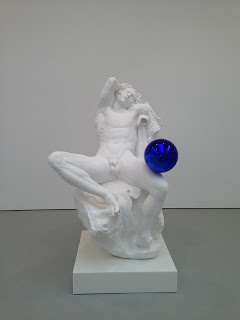
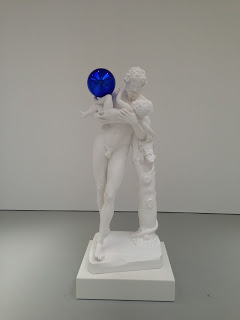
Jeff Koons, figurative sculptor and artist, has created a collage of pop culture and art history. Here is the artist speaking of Gazing Balls:
“I had the idea for Gazing Balls for decades. I wanted to show the affirmation, the generosity, the sense of place and the pleasure of the senses that the Gazing Balls represent. The Gazing Balls series is based on the idea of transcendence. Our realization of our own mortality is an abstract thought - from there, we can reach an understanding of the outside world, our family, our community, we can engage in an open dialogue with humanity at large beyond the present moment. The Gazing Balls series is about the philosopher’s vision; starting from the senses, and directing our gaze out towards the eternal through pure form and ideas.”
The New York Times calls Koons the most important American artist since Warhol. I believe he is a significant artist of our time: he seems to possess an extraordinary ability to capture and express the values and desires of the modern age. The visions of our contemporary artists allow us to see our own societies and their woes reflected back at us; societies infected by complacency, consumerism, immediacy, new technology, utilitarianism. By understanding them, or at least acknowledging them, we are empowered to create a different future for ourselves.
- Details
- Written by Alejandra de Argos
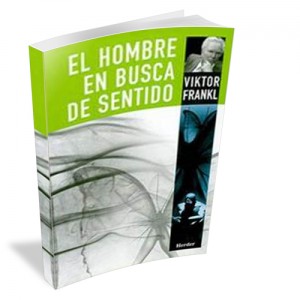
The big question : What is the meaning of life for humans ?
According to Viktor Frankl , author of the book "Man 's Search for Meaning " , the answer would be that there is no meaning of life , but many , as many as people inhabit the Earth. No need to look for an abstract meaning of life , but the meaning that you give to life in every stage of your personal development ; These will be determined by a mission, a mission to carry out at all times.
The author tries to help answer these and other existential questions through their knowledge and experience in Nazi concentration camps . The reader causes a continuous and deep reflection .
Viktor Frankl (1905-1997) was Jewish Austrian neurologist and psychiatrist , founder of logotherapy , which is a meaning -centered psychotherapy . Unlike psychoanalysis is more introspective and retrospective , logotherapy least look at our past and to our future , values and the meaning of life trying to discover ourselves.
Viktor Frankl, "being a man means directed toward something or someone other than oneself , performing either a value , achieve a sense or find another human being "
Another interesting facet pragmatics of speech therapy is a technique that develops, and it calls "paradoxical intention." Through this technique , the author helps patients fight their fears as they may cause in some cases, what we fear . It also seeks to control the hyperintention , which is precisely the opposite, excessive desire for something which impacts its performance . The " paradoxical intention " would be to induce the patient to do what you fear as a method of healing.
All these skills are implicit his ordeal in four Nazi concentration camps , Viktor Frankl shares experience with us in the first part of the book, where we make an analysis.First , how to be psychologically affected human being subjected to such extreme situations and were dramatic as those experienced by him.
This is a very exciting time we live with great existential emptiness and nihilism that attacks part of the society of our time. Especially the loss of values, traditions and religious dogmas skepticism toward everything and preset .
I hope that reading "Man 's Search for Meaning " will be as useful as it has been for me. Contributing to introspect about your own life experience , your skills , your hopes, your desires, your limitations ... and projecting a positive and pragmatic , directed to a process of personal development future. And with the same procedure as regards our fears and insecurities , after a estiológico process and acceptance, one can better cope with them, minimizing them , controlling and transforming them into individual growth .

